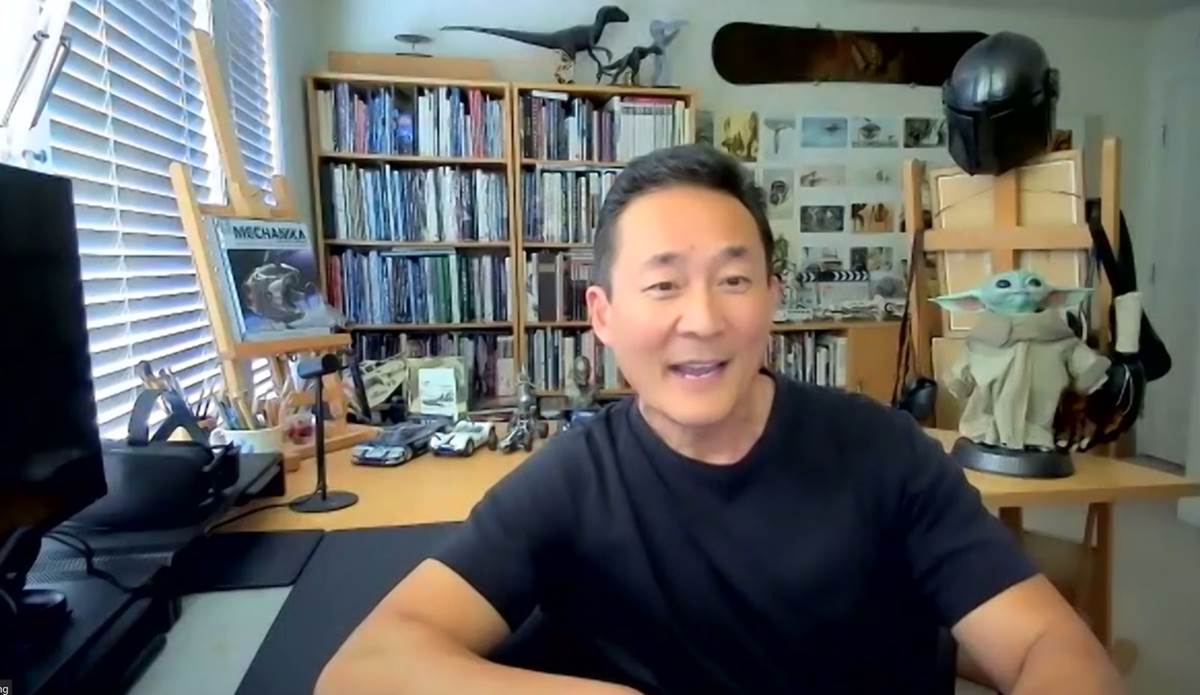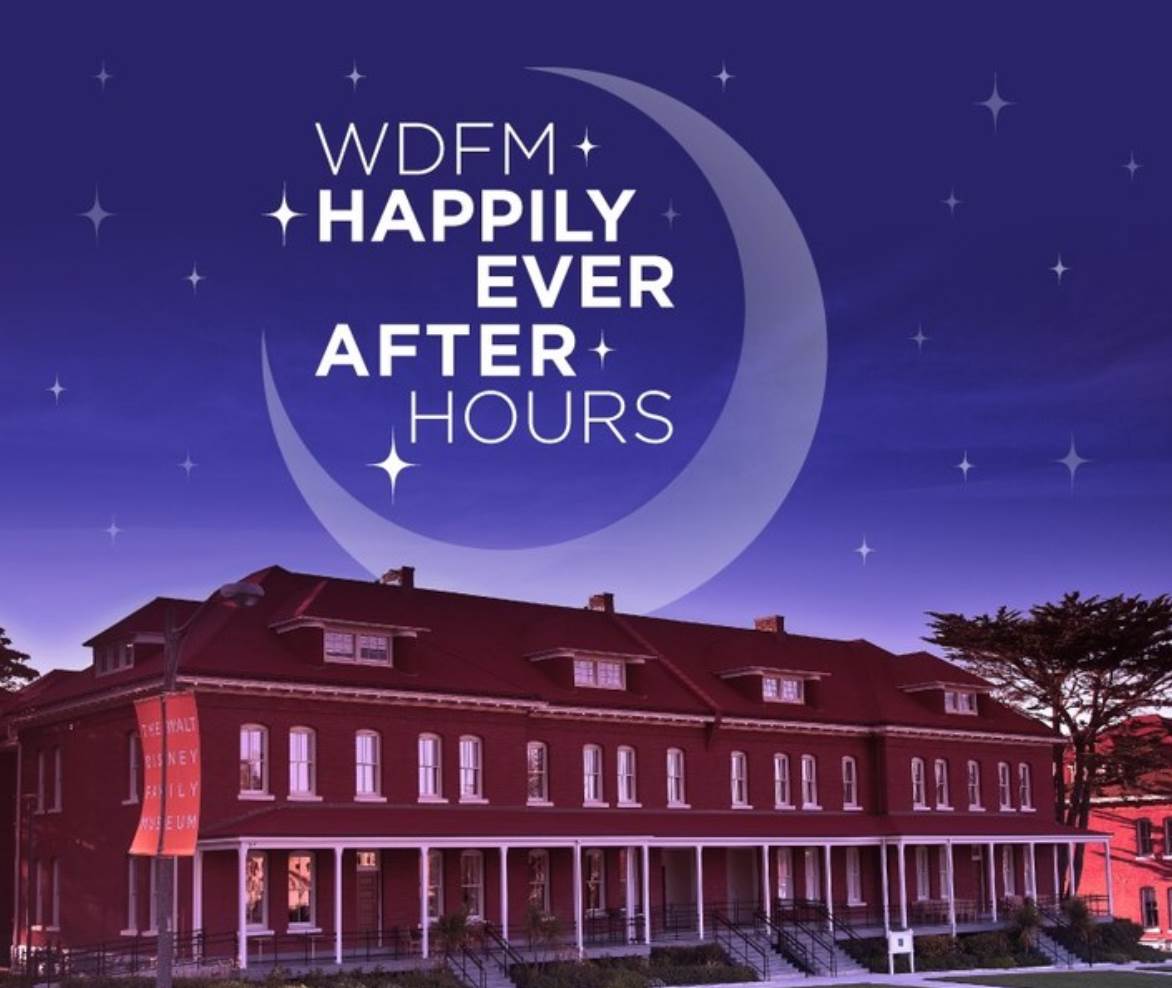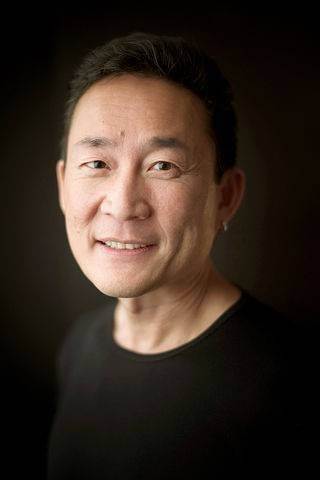The Walt Disney Family Museum’s Happily Ever After Hours event series continued this evening with a discussion with Lucasfilm Vice President and Executive Creator Director Doug Chiang, who began his as a stop-motion animator on Pee-Wee’s Playhouse and wound up as the head of Lucasfilm’s art department on Star Wars: Episode I – The Phantom Menace. His work in A Galaxy Far, Far Away continued into the Disney era of Lucasfilm when he served as Production Designer on Rogue One: A Star Wars Story and the smash hit Disney+ original series The Mandalorian.
In the bullet-point list below, I’ve enumerated some of the most fascinating tidbits and factoids to come out of The Walt Disney Family Museum’s conversation with Doug Chiang.
- Doug talked about arriving at Industrial Light & Magic in 1989 during the period when there weren’t any Star Wars films in development. When George Lucas announced the prequels in 1994, Chiang submitted his portfolio and Lucas responded to what he saw. Doug was shocked when he was offered the job to head up the art department. He was terrified when he started the job at Skywalker Ranch.
- Doug says George Lucas wanted to start fresh with the prequels and create a whole new look for the movies. He says it helped him understand the entire Star Wars design aesthetic.
- Chiang says he was self-taught by learning on the job, and looks back at his time working under George Lucas as his art and film school. “I learned so much about cinematic design– what it takes to create powerful imagery on the screen.”
- Lucas never saw Star Wars as a science fiction / fantasy series, but as a historical or period film. 80% of the universe comes from real-world designs and existing cultures.
- “The details don’t really define the design, they augment it.”
- Lucas selected designs based on whether he could understand them within one or two seconds. “As a designer you have to think almost child-like.”
- “Rogue One was very special to me because it was really my first opportunity to step into classic Star Wars.” Early on, Chiang says he had many passionate discussions with director Gareth Edwards about the original Star Wars film. They decided to try to limit themselves to designing sets that looked like they could have been created for A New Hope but never filmed. “It was all about creating design continuity within the Star Wars universe.”
- Chiang talked about Lucas converting the classic Star Wars films to 4K and all the details that were revealed by the improvements to the image. Doug kept that in mind when designing Rogue One, trying to recapture the feel of the costumes and vehicles rather than replicating the actuality of the original props.
- He says The Mandalorian is the sweet spot of Star Wars for him because it bridges the gap between the old and the new. He always wanted to know what the Krayt Dragon looked like when it was alive, and the creative team looked at previous designs of the creature. “All of the Krayt Dragons that we’ve seen before are all babies.”
- Chiang says creating Star Wars: Galaxy’s Edge was like making a film in slow motion. “The opportunity to work with the Imagineering team was so terrific.” He says everything created for the films is fake, but everything on Batuu is created to last for decades. They also had to take into account safety regulations and trip hazards in designing those environments, unlike on a film set. The Millennium Falcon’s doors had to be redesigned to make them wheelchair accessible.
- His favorite details in Galaxy’s Edge include the crater where the probe droid crashed behind the Droid Depot, R2-D2’s tracks in the ground, and the definitive full-size Millennium Falcon.
- Doug Chiang then answered some audience questions from the event attendees. He says he’s been working on five projects all at the same time because of the Disney+ series that have been greenlit in the wake of The Mandalorian’s success.
- He credits his accomplishments to the team at the Lucasfilm art department.
- Chiang says he was sad when the ILM model department and creature shops got phased out in favor of digital technologies, but a lot of the artists figured out how to continue working in these newer media.
- He talked about the development of Baby Yoda / Grogu, and how nervous everyone was about whether or not that character would work. “You could easily tip it over into something that’s too cute, and lose the audience.” He says Jabba the Hutt and Yoda were also high-risk designs during creation of the Original Trilogy.
- “Filmmaking is about creating the illusion of life; it’s not about creating life.”
- He likes that the pendulum is swinging back from CGI-created spectacle to smaller-scale stories using more practical techniques.
- Chiang says he sees Star Wars as one cohesive universe instead of separate eras, and that The Mandalorian is definitely representative of that.
- “Every day I wake up with a smile because I enjoy what I do. It’s a lot of work, but it’s definitely worth it.”
The Walt Disney Family Museum’s Happily Ever After Hours event series continues on Wednesday, July 21 with director and story artist Jennifer Yuh Nelson (Kung Fu Panda).



